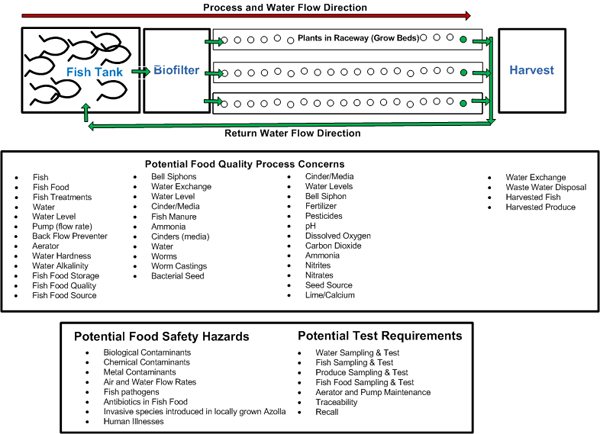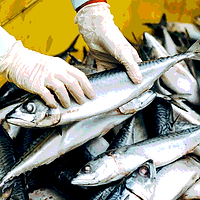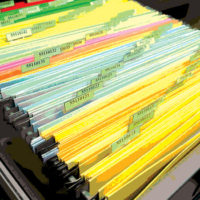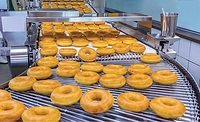If you walk around some schools nowadays, you will notice that a significant and growing number of them are getting involved in gardening. Some of them are actually putting shovel to earth, some are organic, some have greenhouses and some are into hydroponics or even aquaponics. There are many lessons to be learned by gardening, and many teachers and parents are happily getting kids involved in those lessons.
More importantly, many of those gardens are supplying produce, and maybe even fish, from those gardens to cafeterias or local farmer’s markets. This is all done joyously and with great feeling of accomplishment. Some of us succeed in gardening before we go into farming. Something about making things grow starts a people on the agricultural path.
It’s one thing to have a garden in your back yard and quite another thing to take your locally grown produce and introduce it into distribution channels as part of a supply chain where you must assume responsibility and liability. The Food Safety Modernization Act (FSMA) allows “small” suppliers to escape food safety responsibility by providing loopholes big enough for a football player to run through. Unfortunately, those loopholes will eventually eliminate the opportunity for small producers to sell into any food supply chain. Buyers will simply not be allowed to purchase from operations that are not food safety certified.
While compliance organizations have each developed sets of food safety audit standards and paid their fees to provide certification services, the question of just what makes for safe and quality food still haunts us all. We know that bacteria and chemicals can be bad for us but there are few, if any, standards that require post-harvest chemical and bacterial testing at the farm level. The farm, by the way, is a primary source of contaminants, which are usually found further down the chain in restaurants (and blamed on cross-contamination) or processing operations. It all becomes a blame game with food origins relatively protected due to a lack of oversight.
Aquaponics systems are particularly interesting because this method of production provides both a source of protein and produce to the marketplace, perhaps making it doubly dangerous. On the other hand, aquaponics provides us with an opportunity to establish both food quality and food safety controls in a preventive manner—at the source. Aquaponics saves water and land, seems cleaner for the environment and allows for the use of solar energy to run pumps. If you talk to aquaponics fanatics, they are after a truly sustainable operation that functions completely off the grid (well, almost completely).
Aquaponics provides us with clearly defined inputs, processing and outputs. If things are balanced just right, food emerges; food, we assume, that is nutritious, contaminant-free, has fresh flavor and can even be sold because it has market appeal. This is a perfect set up for a schoolyard and a great learning experience.
But, what about food quality and food safety? How are they controlled in any farming or aquaponics operation? We begin with a basic understanding of aquaponics. Aquaponics intends to produce protein and produce in a single system in as sustainable and green manner as possible. Figure 1 shows a fish tank, a biofilter and three grow beds or raceways. Basically, water, air and fish work together in the fish tank; the fish are fed, respire and defecate adding ammonia and other materials to the fish tank water. The fish tank water is pumped into the biofilter, where, through the miracle of nitrification, ammonia is turned into nitrites and nitrites into nitrates. The water is now rich with nutrients needed by the produce and is pumped from the biofilter into the grow beds. Lettuce, onion or other seedlings may be placed in the grow beds in cinder or some other media or might simply float in Styrofoam floats with their roots in the nutritient rich water. The plants grow and the produce is harvested, inspected and packaged for the market. The fish are also harvested at an acceptable market weight and are usually sold live to restaurants, markets or through distribution.
 Figure 1: One Version of an Aquaponics Operation with Food Quality and Food Safety Options
Figure 1: One Version of an Aquaponics Operation with Food Quality and Food Safety Options
That’s how the basic process is often setup, but many simpler or more complex setups are currently in existence. Numerous items are added to the basic system in order to produce and maintain a balanced state.
The figure also shows a significant number of potential food quality process concerns, food safety hazards and potential test requirements. Not shown are the critical control points for each hazard. Control points are included in the flow charts presented below.
Food Safety and Food Quality Planning
There is a significant movement towards establishing strong management systems over both food safety and food quality. The Safe Quality Food (SQF) Institute, for example, has established a level three opportunity for food suppliers to significantly increase food quality. SQF 1000 Level 3 focuses on producer food safety and food quality. Process controls will become increasingly important as FSMA is clarified and administrative rules established. I anticipate that over the next few years, SQF, Global Food Safety Initiative and ISO requirements will evolve as more important standards. These changes will result in food supplier consolidation as many operations will not be able to compete at increasingly maturing food safety and food quality levels.
There are literally hundreds of different set-ups for aquaponics systems. This article depicts a generic approach to food safety and food quality planning that might be brought to focus on a typical aquaponics operation. While there has been quite a bit of peripheral research involving various aspects of aquaponics, the opportunity to integrate some of the research findings into food quality and food safety plans is just beginning to emerge. Aquaponics also provides a unique opportunity to begin to apply Hazard Analysis and Critical Control Points (HACCP) concepts at the producer level. Applying HACCP to the farm is generally avoided since it seems to be rather commonly accepted that farms must continue to be dirty and relatively uncontrollable.
The approach to food safety and quality planning requires the development of a flow chart for each that match requirements researched and outlined on two spread sheets: one for food safety and one for food quality. Additionally, certain management, worker and facility controls that might not fit conveniently on either flow chart or on the spread sheets can be summarized as shown in Figure 2 below. The three boxes serve to summarize criteria that are often found on audit checklists.
 Figure 2: Worker, Facility and Management Control Considerations
Figure 2: Worker, Facility and Management Control Considerations
For purposes of clarification, the planning flow charts and spread sheets were developed with the intent to show inputs to the system, processes and controls, sample and test requirements and system outputs. These are color-coded in both the flow charts and spread sheets so that they might be easily recognized in each document. The color-coding is shown below as Figure 3.
Figure 3: Plan Color-coding Scheme
Inputs to an Aquaponics System
Fish are an input item to an aquaponics system. Depending on the system design, other inputs include water, fish food, locally grown Azolla cinders or media that may be used in the biofilter and plants grown in the raceway. The requirements for physical structures and water flow systems is excluded from this paper but can be added to more extensive food safety and food quality plans. Often aquaponics farms establish their own germination beds in order to provide plants for the grow beds.
Figure 4 below shows the accompanying flow charts for water input controls for both food safety and food quality control plans. The plan shows concern over maintenance of the back flow preventer, a divergence of approaches based on various sources of water, sample points, pass/fail decision points along with logging of data, disqualification of water sources, and potential corrective action loops. Since the flowcharts presented below are somewhat lengthy, they have been truncated in an attempt to show side-by-side comparisons between the food safety plan and the food quality plan.
Figure 4: Flowcharts for Water Input Controls for both Food Safety and Food Quality Control Plans
The flow charts are sectioned and presented based on the process flow components, including water input, fish tank and biofilter controls, grow bed controls and harvest and shipping controls.
The fish tank and biofilter controls become increasingly complicated. Fish food is an input and must be certified or sampled and tested for various contaminants as noted in the spreadsheet. There are also significant concerns on the food quality process controls side with the storage of the feed. The delivery of feed based on the growth rate and size of fish becomes increasingly important as a process and product quality control. In some aquaponics operations, bacterial seed mechanisms are used to start the biofilter and these too must be strictly controlled (some aquaculture systems use cattle manure and urine to seed biofilters). Water, fish manure, vermicast and cinders (grow media) are all sampled for testing in the food safety chart. Data is logged and corrective action cycles are established for both the fish tank and the biofilter. Water pumps and aerators are important food quality controls (Figure 5).
Figure 5: Fish Tank and Biofilter Controls
The system continues flowing into the produce grow beds (Figure 6), which are often called raceways. If pesticides and fertilizers are used, the water may be sampled and tested on the food safety side, whereas on the food quality side, they may be adjusted to attain maximum produce growth and yield based on visual inspection. Obviously, samples are taken and, when needed, other inputs are added to bring the pH up or down, adjust for nitrate and nitrite levels that are too high or too low and adjust for dissolved oxygen. Other fertilizers may be added. Pesticides may be used. These are all input items that impact the quality and safety of both fish and produce.
Figure 6: Grow Bed Controls
The final section of the flowcharts and spreadsheets are dedicated to the harvest, inspection, test and shipping operations (Figure 7). On the food safety side, traceability components come into play in order to facilitate any need for recall. Data recording and corrective action loops are defined and feedback is established to all preceding operations. A complete food safety and food quality process control flowchart is shown in Figure 8.
Figure 7: Harvest and Ship Controls
Figure 8: Aquaponics Food Quality System Qualification Flowchart
Summary
The flowcharts generally contain less detail than the spreadsheets but are intended to provide a visual check of operational capabilities. As with all food safety and quality plans, there are always issues that might become questionable during the planning process.
The evolution of such plans depends on the attention to detail and the farm manager’s willingness to do all possible to protect consumers. There are still a lot of “old farm” attitudes. Resistance to change is a predominant player. But for those farmers that seek to take a leadership role to assure the success and protection for their operations, food safety and food quality planning is a must.
John M. Ryan, Ph.D. was the Administrator for the Hawaii State Department of Agriculture's Quality Assurance Division for the past several years and is currently the president of Ryan Systems, located in Canyon Lake, CA. He can be contacted at jryan@ryansystems.com.
Get our eMagazine delivered directly to your inbox
Stay in the know on the latest science-based solutions for food safety.
SUBSCRIBE TODAY!Copyright ©2024. All Rights Reserved BNP Media.
Design, CMS, Hosting & Web Development :: ePublishing



